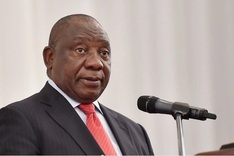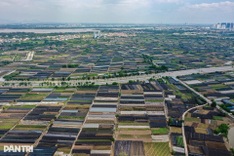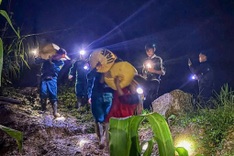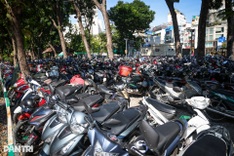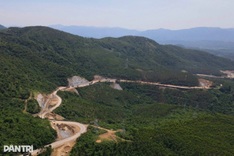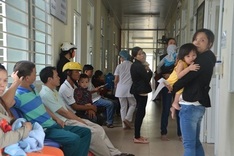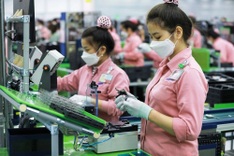The weather agency said a huge earthquake was more likely in the aftermath of a magnitude 7.1 jolt in the south on Thursday, which left 14 people injured.
Some bullet trains between Tokyo and western Osaka are running more slowly as a precaution, so delays will be possible for about a week, the rail operator said.
Nuclear plants nationwide were also instructed by authorities to double-check their disaster preparations.
The Japanese word for "hoarding" was trending on social media platform X as people expressed concern about panic-buying and urged each other to stay rational.
Premier Kishida was due Friday to travel to Kazakhstan, Uzbekistan and Mongolia and attend a regional summit.
"As the prime minister with the highest responsibility for crisis management, I decided I should stay in Japan for at least a week," he told reporters.
He said the public must be feeling "very anxious" after the Japan Meteorological Agency (JMA) issued its first advisory under a new system drawn up following a major magnitude 9.0 earthquake in 2011, which triggered a deadly tsunami and nuclear disaster.
"The likelihood of a new major earthquake is higher than normal, but this is not an indication that a major earthquake will definitely occur," the JMA said.
- 'Risk elevated, but low' -
Traffic lights and cars shook and crockery fell off shelves during Thursday's earthquake off the southern island of Kyushu, but no serious damage was reported.
The Fire and Disaster Management Agency said 14 people were hurt -- including two serious injuries.
Sitting on top of four major tectonic plates, the Japanese archipelago of 125 million people sees some 1,500 quakes every year, most of them minor.
Even with larger tremors the impact is generally contained thanks to advanced building techniques and well-practised emergency procedures.
The government has previously said a megaquake has a roughly 70 percent probability of striking within the next 30 years.
It could affect a large swath of the Pacific coastline of Japan and threaten an estimated 300,000 lives in the worst-case scenario, experts say.
Experts from Earthquake Insights said that quake prediction is impossible and even when the risk of a second earthquake is elevated, it is "still always low".
On January 1, a 7.6-sized jolt and powerful aftershocks hit the Noto Peninsula on the Sea of Japan coast, killing at least 318 people, toppling buildings and knocking out roads.
In 2011, a mammoth 9.0-magnitude undersea quake off northeastern Japan triggered a tsunami that left around 18,500 people dead or missing.
It sent three reactors into meltdown at the Fukushima nuclear plant, causing Japan's worst post-war disaster and the most serious nuclear accident since Chernobyl.
A future megaquake could emanate from the vast Nankai Trough off eastern Japan that in the past has seen major jolts, often in pairs, with magnitudes of eight and even nine.
This included one in 1707 -- until 2011 the largest recorded -- when Mount Fuji last erupted, in 1854, and then a pair in 1944 and 1946.
People should "make sure they have enough water in their house to last for a week or so after a quake. And maybe batteries for their flashlight" as part of their usual precautions, Robert Geller, professor emeritus of seismology at the University of Tokyo, told AFP.
"But other than that, there's no need to do anything special."







